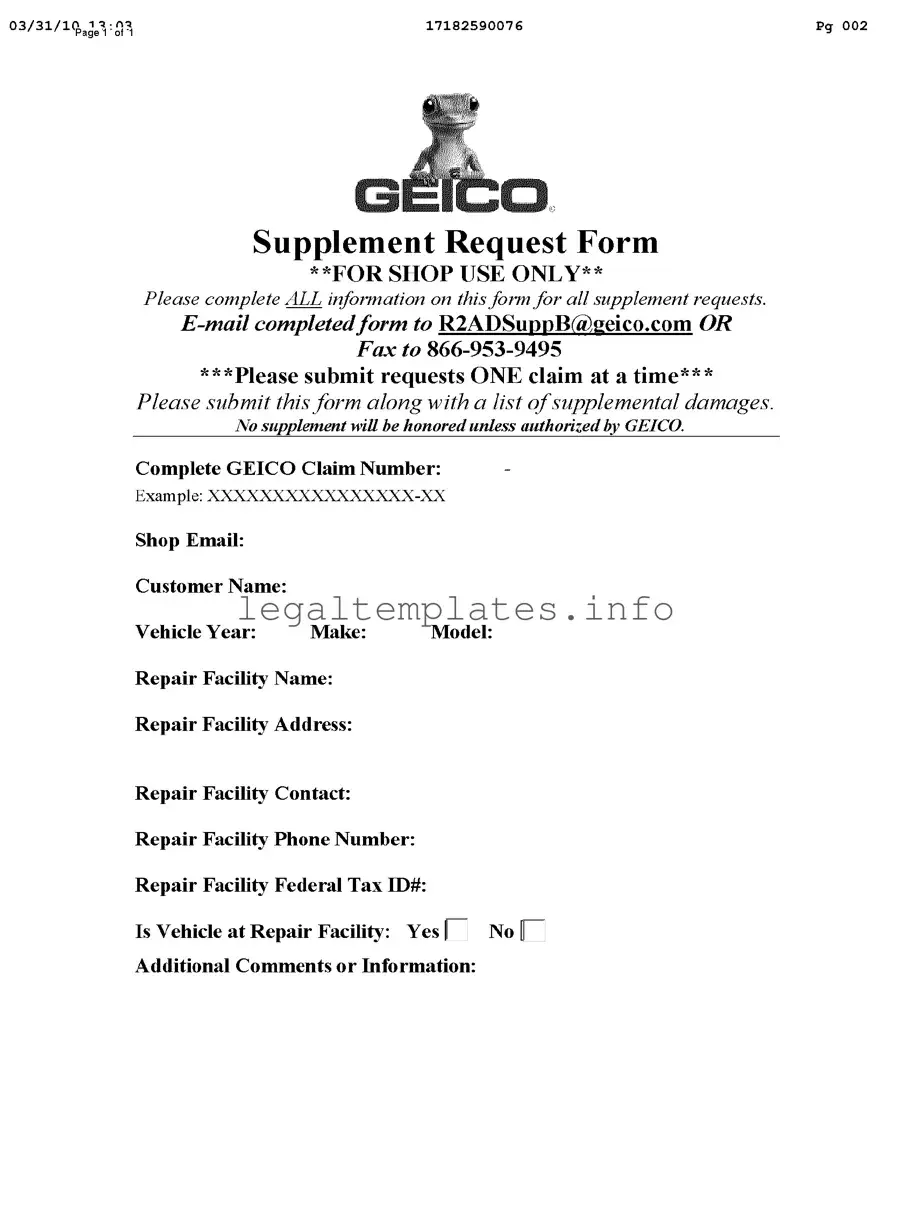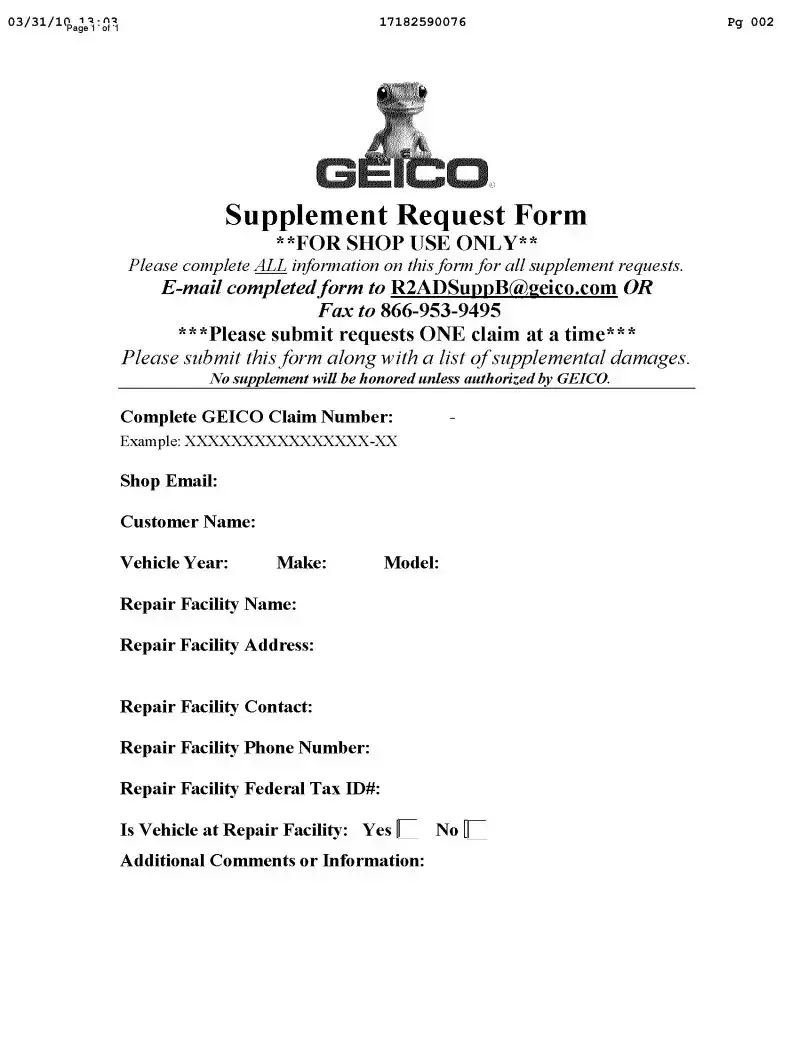The "Property Damage Claim Form" used by insurance companies bears a strong resemblance to the Geico Supplement Request form. Both documents are integral to the claims process, requiring detailed information about the damaged property and the claimant. The Property Damage Claim Form, like the Geico Supplement Request, necessitates specific details about the incident, including date, location, and extent of damage, to ensure an accurate assessment and appropriate compensation.
Another document similar to the Geico Supplement Request form is the "Medical Expense Claim Form" provided by health insurance companies. This form collects detailed information about medical services received due to an injury or illness, analogous to how the Geico form gathers data on vehicle repair needs. Both forms require personal information about the claimant, specifics of the claim (medical treatments or vehicle damages), and verification of service necessity, all aimed at determining the compensation amount.
The "Homeowner's Insurance Claim Form" also mirrors the Geico Supplement Request in its function and structure. Designed for homeowners to report property damage or loss, this form requires detailed descriptions of the incident, similar to the vehicle damage details needed on the Geico form. Both forms facilitate the claims process by collecting comprehensive information, enabling insurance adjusters to evaluate and approve additional costs required for repairs or replacements.
A "Rental Car Damage Claim Form" shares significant similarities with the Geico Supplement Request form. Used by rental car companies or insurance providers, this form is essential when a rented vehicle sustains damage. It collects exhaustive details about the rental agreement, damage incurred, and repair estimates, akin to the vehicle year, make, model, and supplemental damages listed on the Geico form. This correlation helps in processing claims efficiently to cover repair costs.
The "Workers' Compensation Claim Form" is akin to the Geico Supplement Request form in its purpose to secure benefits following a workplace injury. Employees must fill out detailed information about the injury and its impact on their work capabilities, similar to how the Geico form details vehicle damages affecting its functionality. Both forms are pivotal in evaluating the extent of damage or injury to determine the necessary compensation or repairs.
An "Equipment Damage Report Form" used by companies to report damages to business-related equipment or machinery shares similarities with the Geico Supplement Request form. Both forms require specific information about the damaged item (in this case, equipment or a vehicle) and the circumstances leading to its damage. This detailed reporting is crucial for assessing the repair needs and associated costs.
The "Liability Claim Form," often used in cases involving personal injury or property damage where the claimant holds another party responsible, parallels the Geico form. It demands detailed information about the incident, including location, date, and extent of damage or injury, similar to the vehicle information and supplemental damages reported on the Geico Supplement Request form. This structured information gathering aids in the resolution and compensation process.
"Shipping Damage Claim Forms," used by businesses or individuals to report damages incurred during shipping, reflect the systematic data collection seen in the Geico form. These forms detail the condition of items before and after shipping, much like how the Geico form requires a list of supplemental damages for a vehicle. This ensures accountability and aids in claiming compensation for damages.
Lastly, the "Warranty Claim Form" for products that fail within the warranty period has similarities to the Geico Supplement Request form. Customers must provide detailed information about the product, the defect, and attempted solutions, parallel to the vehicle information and damage details required by Geico. Both forms are crucial for validating claims and facilitating repair or replacement under the terms of coverage.

